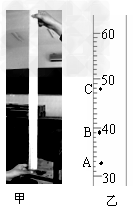Don't blame genes for aging facial skin. A new study of twins suggests you can 1 those coarse(粗糙的) wrinkles, brown or pink spots, and dilated(膨胀的) blood vessels on too much time in the sun, smoking, and being overweight.
Because twins share genes, but may have 2 exposures to environmental factors, studying twins allows an, "opportunity to control for genetic susceptibility(敏感性)," Dr. Elma D. Baron, at Case Western Reserve School of Medicine in Cleveland, Ohio, and colleagues 3 in the latest issue of Archives of Dermatology.
Their analysis of environmental skin-damaging factors in 65 pairs of twins hints that skin aging is 4 more to environment and lifestyle than 5 factors.
But when it 6 skin cancer, the researchers say their findings support previous reports that 7 environment and genes affect skin cancer risk.
Baron's team 8 facial skin of 130 twins, 18 to 77 years old, who lived 9 in the northern Midwest and Eastern regions of the U.S. who were 10 the Twins Days Festival in Ohio in August 2002.
At this time, each of the twins also 11 reported how their skin burned or tanned 12 sunscreen(防晒霜), their weight, and their history of skin cancer, smoking, and alcohol drinking.
The study group 13 of 52 fraternal and 10 identical twin pairs, plus 3 pairs who were unsure of their twin status. Identical(同卵的) twins share all of their genes and fraternal twins share only about half.
From these data, the researchers 14 strong ties, outside of twin status, between smoking, older age, and being overweight, and having facial skin with evidence of environmental 15
16 contrast, sunscreen use and drinking alcohol appeared correlated with 17 skin damage.
Baron and colleagues say the current findings, which highlight ties between facial 18 and potentially avoidable 19 factors -- such as smoking, being overweight, and 20 overexposure to the sun's damaging rays -- may help motivate people to minimize these risky behaviors.
( ) 1. A. blame B. owe C. take D. bring
( ) 2. A. same B. different C. similar D. common
( ) 3. A. explain B. confirm C. declare D. shout
( ) 4. A. equal B. related C. close D. strict
( ) 5. A. characteristic B. personal C. natural D. genetic
( ) 6. A. comes to B. talks of C. refers to D. gets to
( ) 7. A. all B. neither C. both D. either
( ) 8. A. examined B. checked C. inspected D. interviewed
( ) 9. A. most B. usually C. mostly D. always
( ) 10. A. joining B. representing C. attending D. remarking
( ) 11. A. separately B. lonely C. commonly D. truly
( ) 12. A. with B. on C. in D. without
( ) 13. A. consisted B. made up C. contained D. included
( ) 14. A. documented B. recorded C. reported D. noted
( ) 15. A. damage B. exploration C. protection D. material
( ) 16. A. In B. By C. As D. At
( ) 17. A. lesser B. more C. no D. fewer
( ) 18. A. look B. aging C. expression D. wrinkle
( ) 19. A. environmental B. genetic C. emotional D. psychological
( ) 20. A. protected B. planned C. unprotected D. prevented


